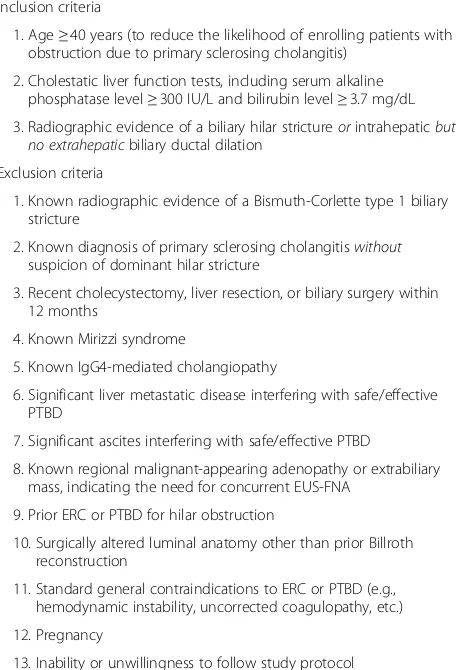Percutaneous transhepatic vs endoscopic retrograde biliary drainage for suspected malignant hilar obstruction: study protocol for a randomized controlled trial
Full text
Figure


Related documents
(B) Backscattering cross section calculated using FDTD (purple circles), compared with the total scattering cross section spectra calculated using the full T-matrix so- lution
Here we present an exploratory case report of a patient with tuberous sclerosis complex who had signi fi cant clinical improvement of her facial angio fi bromas utilizing a “
Sodium fluoride (NaF), casein phosphor- peptide-amorphous calcium phosphate (CPP-ACP), chitosan, oils, multivalent metal ions, and protease inhibitors can be used to
The purpose of the Report Card is to contribute to the improvement of child and youth health outcomes through supporting service planning by providing regular information on the
tion Spectroscopy (CEAS) with broad-band light sources (e.g. Light-Emitting Diodes, LEDs) lends itself to the ap- plication of cavity enhanced Differential Optical
Gene expression profiling studies, such as the ones mentioned here, are essential in addition to GWASs of bipolar disorder patients because they can provide the link
The present study was conducted in three steps: (1) assess- ment of the concordance of the days ’ supply and number of re fi lls allowed recorded in Québec prescription claims